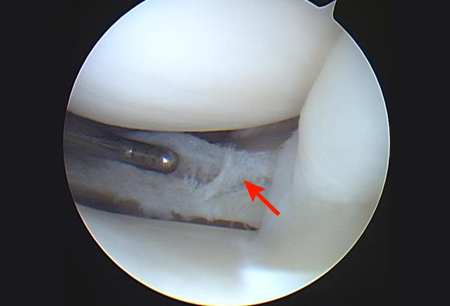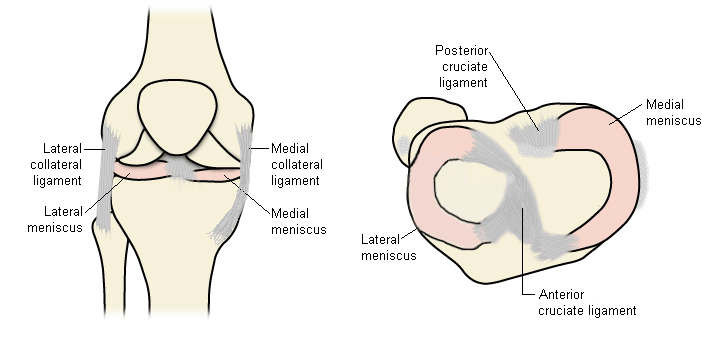Summary
Definition
History and exam
Key diagnostic factors
- history of knee trauma
- history of knee arthritis, instability, or malalignment
- knee swelling
- sensation of knee instability or buckling/catching
- knee pain
- tenderness at joint line and joint line crepitation
Other diagnostic factors
- popliteal (Baker) cyst in chronic cases
- limited range of motion
Risk factors
- acute trauma (pivoting or twisting injury)
- knee joint arthritis
- knee instability
- history of anterior cruciate ligament injury
- malalignment of the knee joint
- rough or uneven playing surface
- poor ground/weather conditions
- older age
- construction work and manual labor jobs
- discoid meniscus
- high BMI
Diagnostic tests
1st tests to order
- clinical tests
- MRI scan
- x-ray
Tests to consider
- arthroscopy
- CT arthrography
- ultrasound
Treatment algorithm
all patients
Contributors
Authors
Hideki Takeda, MD
Orthopedic Surgeon
Department of Sports Orthopedics
NTT Medical Center Tokyo
Tokyo
Japan
Declarações
HT declares that he has no competing interests.
Agradecimentos
Dr Hideki Takeda would like to gratefully acknowledge Dr Lars Engebretsen and Dr Kevin R. Stone, previous contributors to this topic.
Declarações
LE declares that he has no competing interests. KRS is an author of several references cited in this topic.
Revisores
Daniel Solomon, MD
Co-Director of Orthopedic Sports and Shoulder Service
Department of Orthopedic Surgery
Naval Medical Center San Diego
San Diego
CA
Declarações
DS declares that he has no competing interests.
Jung-Ro Yoon, MD
Orthopedic Surgeon
Department of Orthopedic Surgery
Seoul Veterans Hospital
Seoul
South Korea
Declarações
JRY declares that she has no competing interests.
Nikunj N. Trivedi, MD
Fellow
Sports Medicine and Shoulder Surgery
Stanford University
Stanford
CA
Declarações
NNT declares that he has no competing interests.
Seth L. Sherman, MD
Associate Professor of Orthopedic Surgery
Fellowship Director
Sports Medicine and Shoulder Surgery
Stanford University
Stanford
CA
Declarações
SLS declares that he has no competing interests.
Créditos aos pareceristas
Os tópicos do BMJ Best Practice são constantemente atualizados, seguindo os desenvolvimentos das evidências e das diretrizes. Os pareceristas aqui listados revisaram o conteúdo pelo menos uma vez durante a história do tópico.
Declarações
As afiliações e declarações dos pareceristas referem--se ao momento da revisão.
Referências
Principais artigos
Kopf S, Beaufils P, Hirschmann MT, et al. Management of traumatic meniscus tears: the 2019 ESSKA meniscus consensus. Knee Surg Sports Traumatol Arthrosc. 2020 Apr;28(4):1177-94.Texto completo Resumo
American Physical Therapy Association. Knee pain and mobility impairments: meniscal and articular cartilage lesions, revision 2018. 2018 [internet publication].
American College of Radiology. ACR Appropriateness Criteria® acute trauma to the knee. 2019 [internet publication].Texto completo
Artigos de referência
Uma lista completa das fontes referenciadas neste tópico está disponível para os usuários com acesso total ao BMJ Best Practice.

Diagnósticos diferenciais
- Anterior cruciate ligament tear
- Medial collateral ligament sprain
- Posterior cruciate ligament sprain
Mais Diagnósticos diferenciaisDiretrizes
- Acute isolated meniscal pathology
- Management of traumatic meniscus tears: the 2019 ESSKA meniscus consensus
Mais DiretrizesFolhetos informativos para os pacientes
Osteoarthritis
Mais Folhetos informativos para os pacientesConectar-se ou assinar para acessar todo o BMJ Best Practice
O uso deste conteúdo está sujeito ao nosso aviso legal
